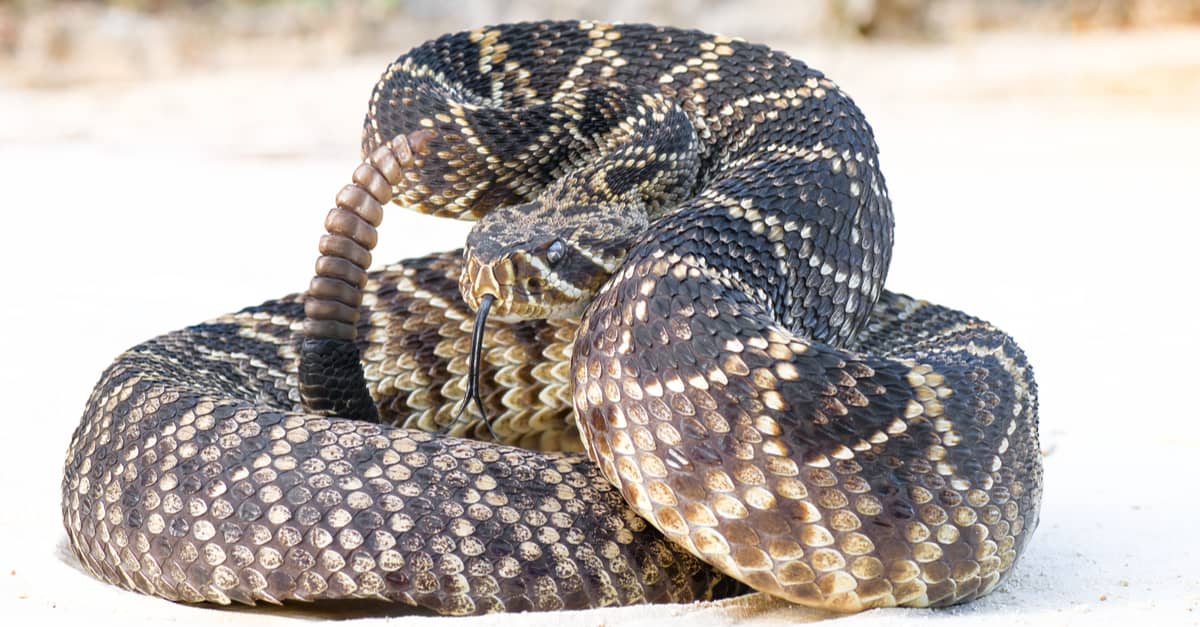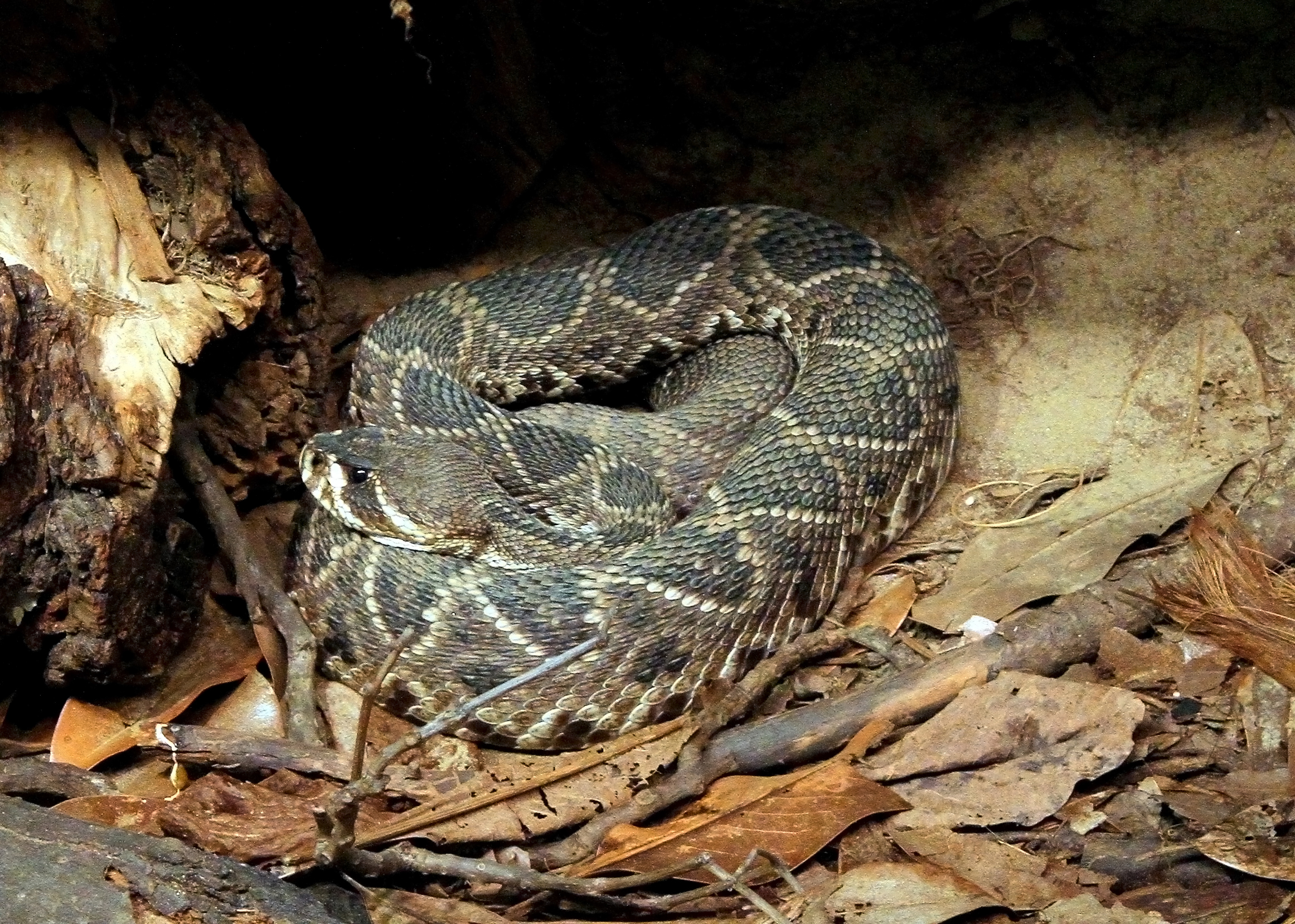Mississippi is home to a variety of venomous snakes, including four types of rattlesnakes. These snakes can be found in a range of habitats throughout the state, from lowland thickets to pine and hardwood forests.
In this article, we will take a closer look at the four types of rattlesnakes found in Mississippi, including their distribution, habitat preferences, and physical characteristics.
You are reading: Discover The 4 Types Of Rattlesnakes In Mississippi
Whether you are a resident of Mississippi or planning a visit to the state, it is important to be aware of these venomous snakes and how to identify them to stay safe in their presence.

4 Types Of Rattlesnakes In Mississippi
Western Pygmy Rattlesnake (Sistrurus miliarius streckeri)
The Western Pygmy Rattlesnake (Sistrurus miliarius streckeri) is one of the four types of rattlesnakes found in Mississippi. This subspecies is primarily distributed in Louisiana, Alabama, and Mississippi, with its range extending west into eastern Texas and southeastern Oklahoma. In Mississippi, the Western Pygmy Rattlesnake is the predominant subspecies of Pygmy Rattlesnake.
Habitat:
– The Western Pygmy Rattlesnake is often found in flatwoods, both pine and hardwood forests, and the environs of swamps.
Physical Characteristics:
– This small venomous rattlesnake is identified by the reddish stripe down the backbone coupled with black cross-bands.
– It has a slender tail and a tiny rattle, making it one of the smallest species of rattlesnakes in North America.
Behavior:
– Like other rattlesnakes, the Western Pygmy Rattlesnake has hollow fangs to inject venom into its prey and heat-sensitive pits between the eyes and nostrils, allowing it to detect and accurately strike warm-blooded prey even in total darkness.
– Juveniles are known to wave their yellow-tipped tail to lure frogs and lizards close enough to kill and eat.
Conservation Status:
– Pygmy rattlesnakes, including the Western Pygmy Rattlesnake, are currently listed as a species of “Least Concern” on the IUCN Red List and are listed as “No special status” on the US Federal List, State of Michigan List, or on CITES appendices.
Dusky Pygmy Rattlesnake (Sistrurus miliarius barbouri)
The Dusky Pygmy Rattlesnake (Sistrurus miliarius barbouri) is a venomous pit viper subspecies endemic to the southeastern United States, including Florida and southern Georgia.
It is one of the smallest subspecies of rattlesnake, with most adults measuring between 12-24 inches (30-61 cm) in total length. The body color of the Dusky Pygmy Rattlesnake varies from light to dark gray, and a lengthwise row of black or charcoal blotches disrupts a reddish-brown stripe running down the middle of the back.
Dark spots occur on the sides and line up with the dorsal blotches, and the tail is slender and ends in a tiny rattle. Dusky Pygmy Rattlesnakes are commonly found in habitats including lowland pine flatwoods, hydric hammocks, prairies, around lakes and ponds, and along the borders of many freshwater marshes and cypress swamps.
They are a generalist predator, taking prey such as lizards, amphibians, rodents, and even invertebrates. In Florida, females typically give birth to around 1-14 live young between July and August. The Dusky Pygmy Rattlesnake is currently listed as a species of “Least Concern” on the IUCN Red List.
Timber Rattlesnake / Canebrake Rattlesnake (Crotalus horridus)

Read more : 7 Types Of Sole Fish
The Timber Rattlesnake, also known as the Canebrake Rattlesnake or Banded Rattlesnake, is a species of pit viper endemic to eastern North America. Here are some key characteristics and facts about this snake:
– Description: Timber rattlesnakes are large, heavy-bodied snakes with a wide head and a narrow neck. They have a characteristic rattle on the end of their tail, which they use as a warning signal. Adults can range from 30 to 60 inches (76 to 152 cm) in length, with the record being more than 6 feet (183 cm) long. They have a rust-colored strip along the length of their back and a black tail tipped with rattles. The coloration of timber rattlesnakes can vary, with canebrakes usually being gray with a pink hue and a pinkish, yellow, orange, or brown stripe running the length of the back, while timber rattlers are typically more brown or yellowish and may even be black.
– Habitat: Timber and canebrake rattlesnakes have a wide distribution in the eastern United States, but the species is absent from most of Florida. They occur in a variety of terrestrial habitats, including lowland cane thickets, high areas around swamps and river floodplains, hardwood and pine forests, mountainous areas, and rural habitats in farming areas. They typically become reduced in numbers in highly urbanized or areas of housing development.
– Behavior: Timber and canebrake rattlesnakes become active above ground by late spring and can be seen periodically until the onset of cold weather in late fall. Canebrakes are active during both day and night but spend the majority of their time coiled in ambush positions ready to capture prey. These rattlesnakes hibernate during cold weather, with timber rattlers congregating in dens in mountainous areas, while canebrakes often overwinter alone in stumps.
– Venom: Like all other pit vipers, timber rattlesnakes are venomous, with a very toxic bite. They are sometimes slow to defend themselves and rely on their ability to blend into their surroundings to avoid confrontation. They seek to escape rather than risking danger and will remain silent, and if possible, hide before revealing their position to a predator. Despite their large size and reputation, they are difficult to provoke into rattling or biting.
Eastern Diamondback Rattlesnake (Crotalus adamanteus)

The Eastern Diamondback Rattlesnake (Crotalus adamanteus) is a species of pit viper in the family Viperidae. It is endemic to the Southeastern United States and is one of the heaviest venomous snakes in the Americas, as well as the largest rattlesnake.
Here are some key characteristics of the Eastern Diamondback Rattlesnake:
– Size: Adults are usually 33-72 inches (84-183 cm) long, with a record length of 99 inches (251.5 cm). They are the largest of all rattlesnakes and can weigh between 2.2 and 7 kg.
– Appearance: These snakes have large, broad heads with two light lines on the face. They have a row of large dark diamonds with brown centers and cream borders down their back. The ground color of the body is brownish, and the tail is usually a different shade of brown or gray, with the diamond pattern fading out or changing into dark bands towards the end.
Read more : 10 Types Of Turtles In Florida
– Habitat: Eastern Diamondback Rattlesnakes are found in the pinelands of Florida, the coastal plains of North Carolina and southern Mississippi, and through eastern Louisiana. They prefer scrublands, coastal forests, barrier islands, pine and wiregrass flatwoods, and slightly more moist areas such as wet prairies or savannas and around the borders of wetlands. They can also be found in abandoned farms or overgrown fields near pine forests.
– Behavior: These snakes are not aggressive and avoid direct contact with people and pets. Most bites occur when the snakes are intentionally molested or accidentally stepped on. Eastern Diamondback Rattlesnakes are adept swimmers and will occasionally swim in saltwater between barrier reefs and along the edges of swamps.
– Venom: The toxin in their venom, called hemotoxin, kills red blood cells and causes tissue damage. Human deaths from rattlesnake bites are rare because antivenom is available throughout the snake’s range.
– Conservation status: The Eastern Diamondback Rattlesnake is not currently listed as a threatened or endangered species. However, its population has been declining due to habitat loss, fragmentation, and persecution by humans. Some organizations have petitioned for its listing under the Endangered Species Act.
FAQS
1. How many types of rattlesnakes are there in Mississippi?
There are four types of rattlesnakes in Mississippi. They are:
1. Eastern Diamondback Rattlesnake (Crotalus adamanteus)
2. Timber Rattlesnake (Crotalus horridus)
3. Pygmy Rattlesnake (Sistrurus miliarius)
4. Canebrake Rattlesnake (Crotalus horridus atricaudatus)
2. When are Mississippi rattlesnakes most active?
Mississippi rattlesnakes are most active from early spring to mid-fall. However, due to the state’s warm climate, they can be active even in winter, unlike their counterparts in colder regions.
3. How can I recognize a venomous rattlesnake in Mississippi?
Venomous rattlesnakes in Mississippi, including the four types mentioned above, have the following distinctive characteristics:
– Pits or small depressions on the side of their face
– Triangular head, slim neck, and a heavy, flattened body
– Vertical “cat-like” pupils
– A single row of scales on the underside of the tail
4 What should I do if I encounter a rattlesnake in Mississippi?
If you encounter a rattlesnake in Mississippi, it is best to keep your distance and give the snake space to retreat. Do not attempt to handle or provoke the snake. If you are in a residential area, contact your local animal control or wildlife agency for assistance in safely removing the snake. In natural areas, it is best to leave the snake undisturbed and allow it to continue its natural behavior.
5. How can I avoid danger when in rattlesnake habitat in Mississippi?
To avoid danger when in rattlesnake habitat in Mississippi, follow these tips:
– Stay on designated trails and avoid tall grass or dense vegetation where snakes may be hiding.
– Wear sturdy, closed-toe shoes and long pants to protect your legs and feet.
– Be cautious when stepping over logs, rocks, or other potential hiding spots for snakes.
– Listen for the sound of a rattlesnake’s rattle, which serves as a warning sign. If you hear a rattle, slowly back away from the source of the sound.
6. What should I do if I am bitten by a rattlesnake in Mississippi?
If you are bitten by a rattlesnake in Mississippi, seek immediate medical attention. Do not attempt to suck out the venom or use a tourniquet, as these methods are ineffective and can cause more harm. Call 911 or your local emergency number for assistance, and try to remain as calm and still as possible while waiting for help to arrive.
Source: https://petstutorial.com
Category: Animals










